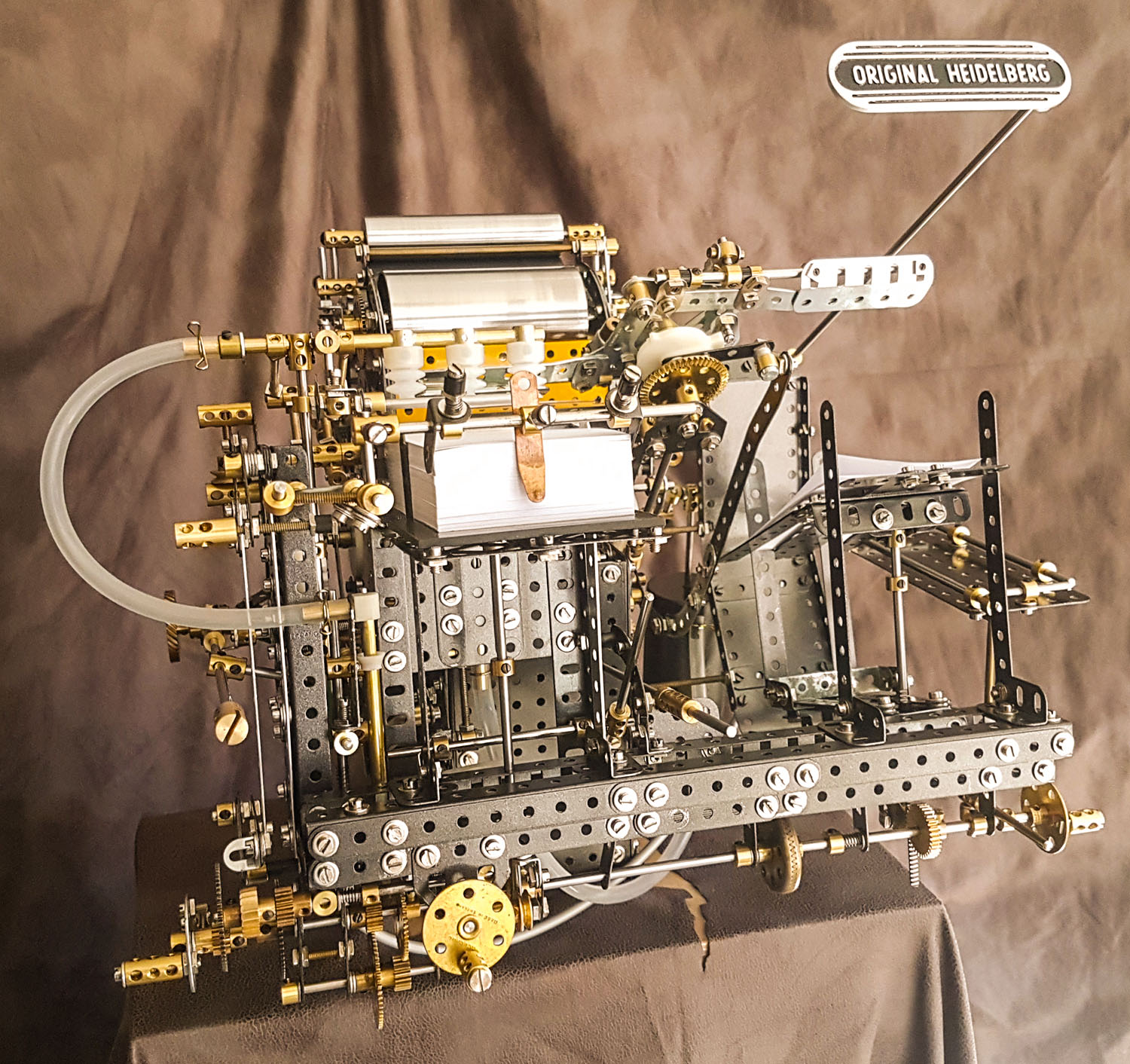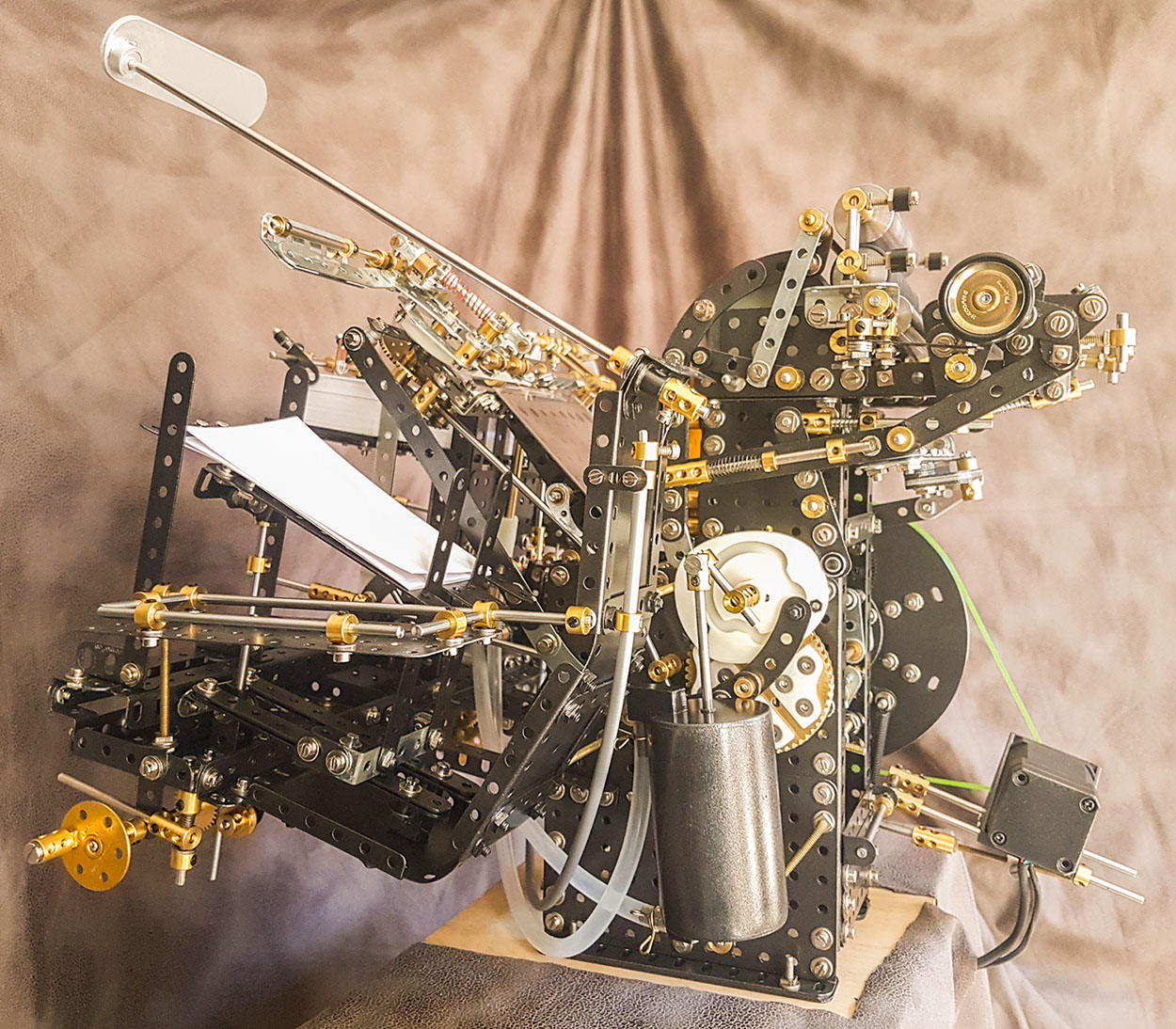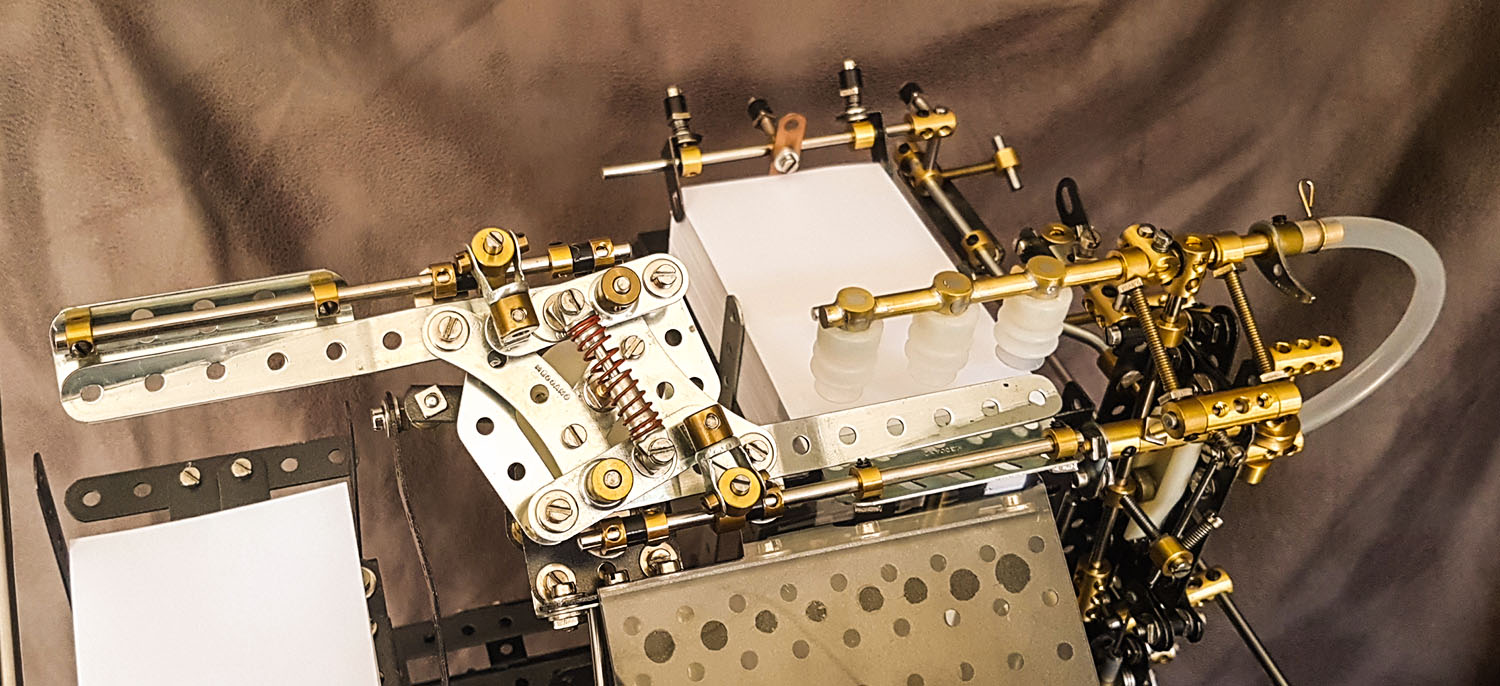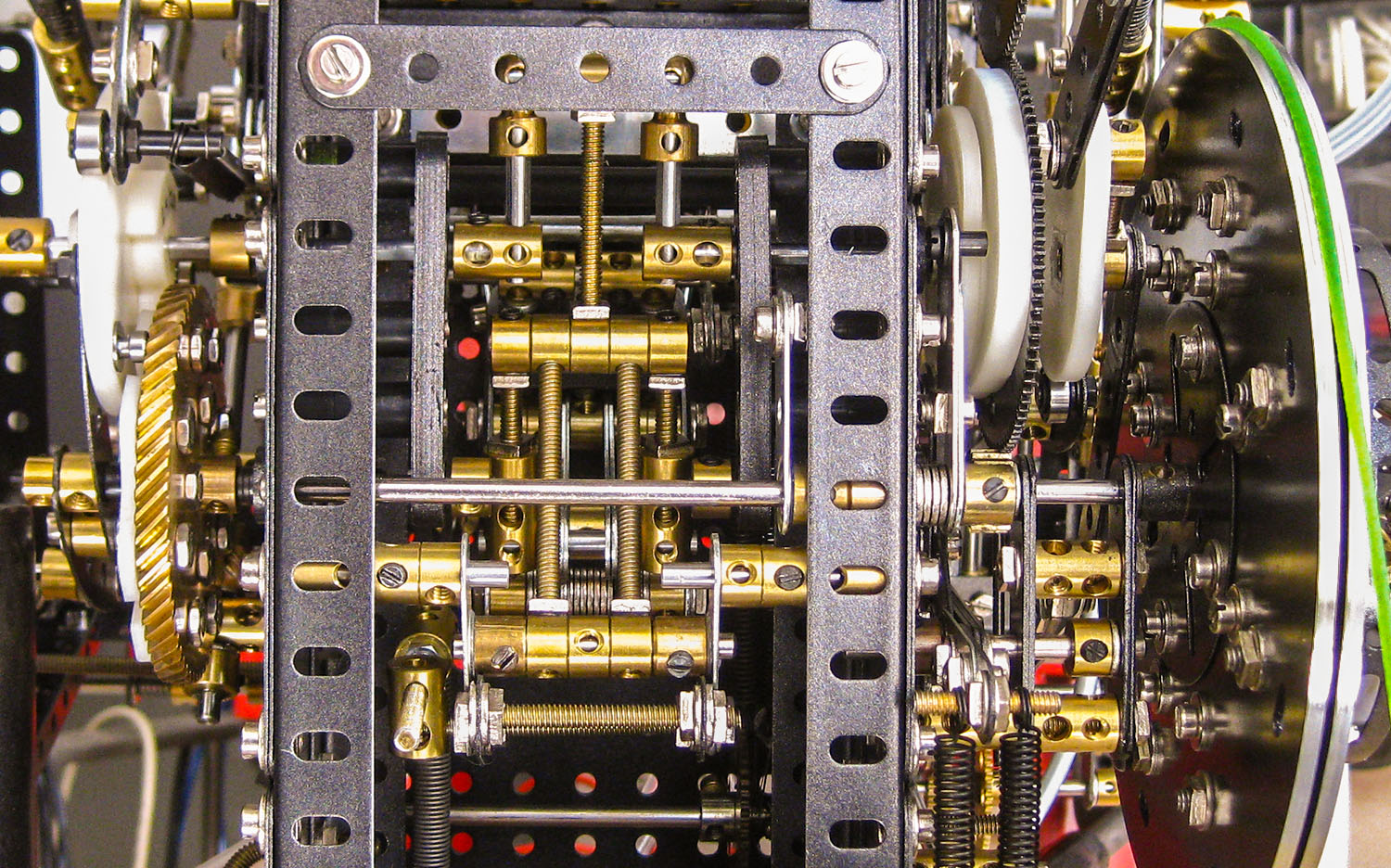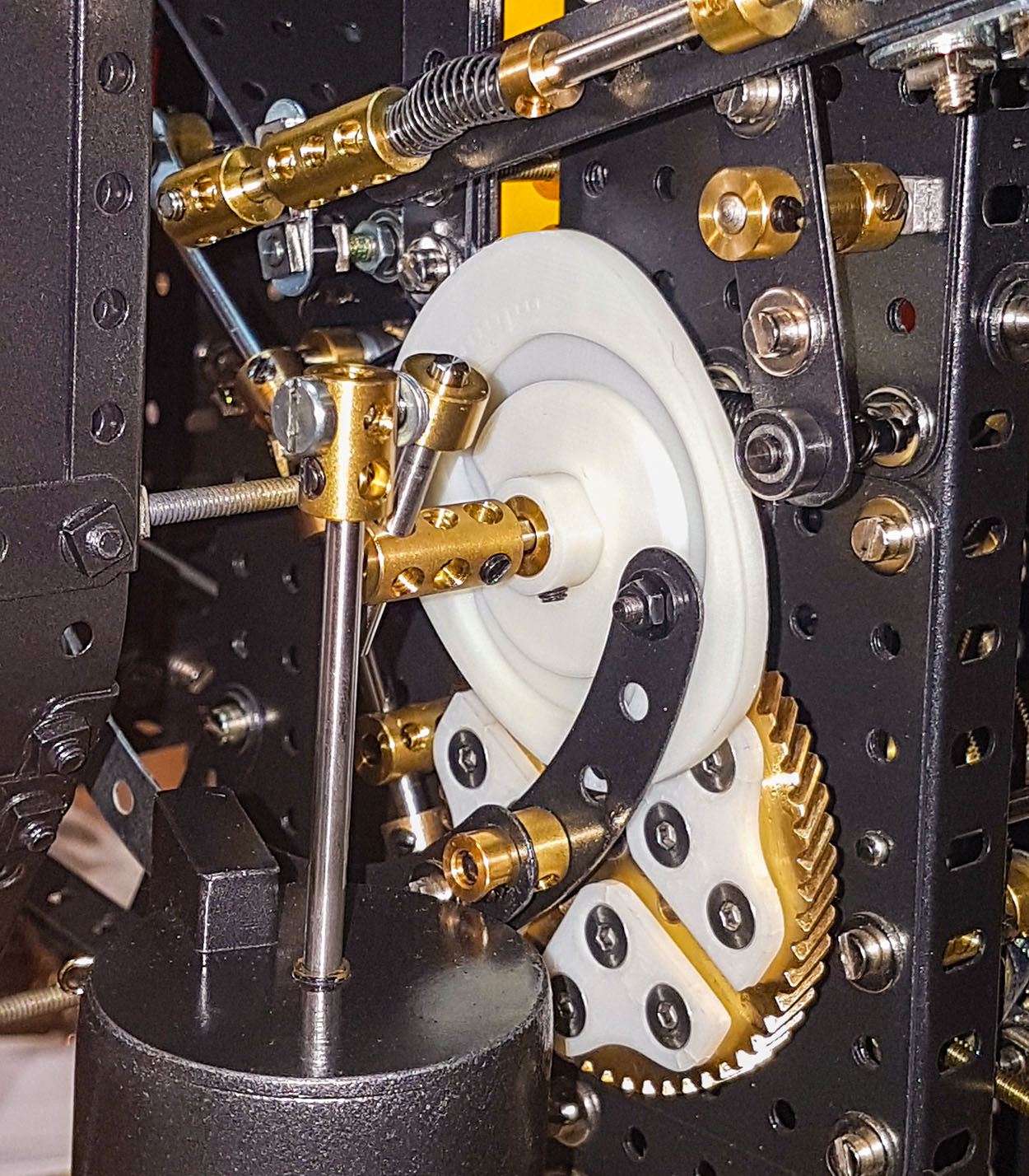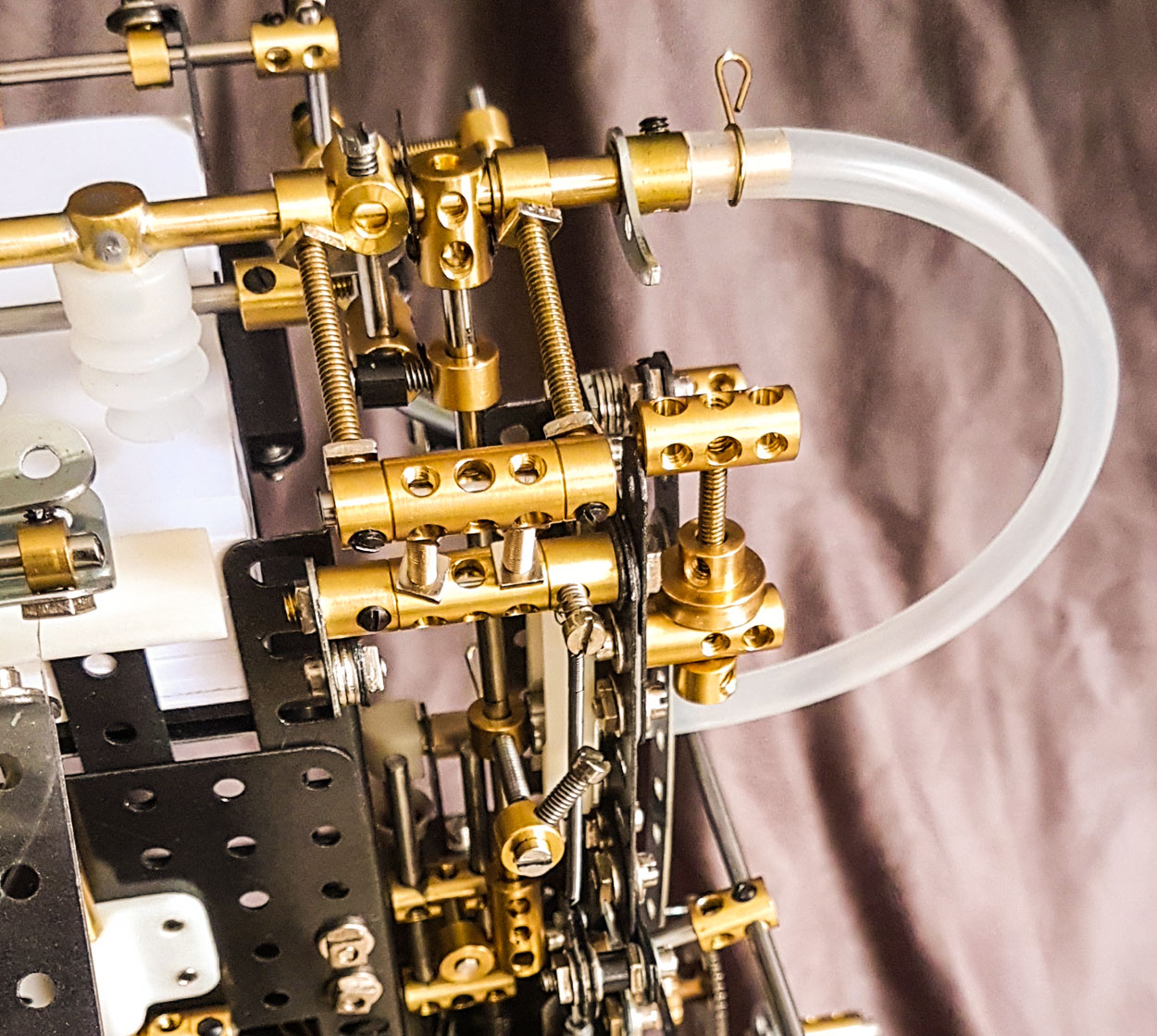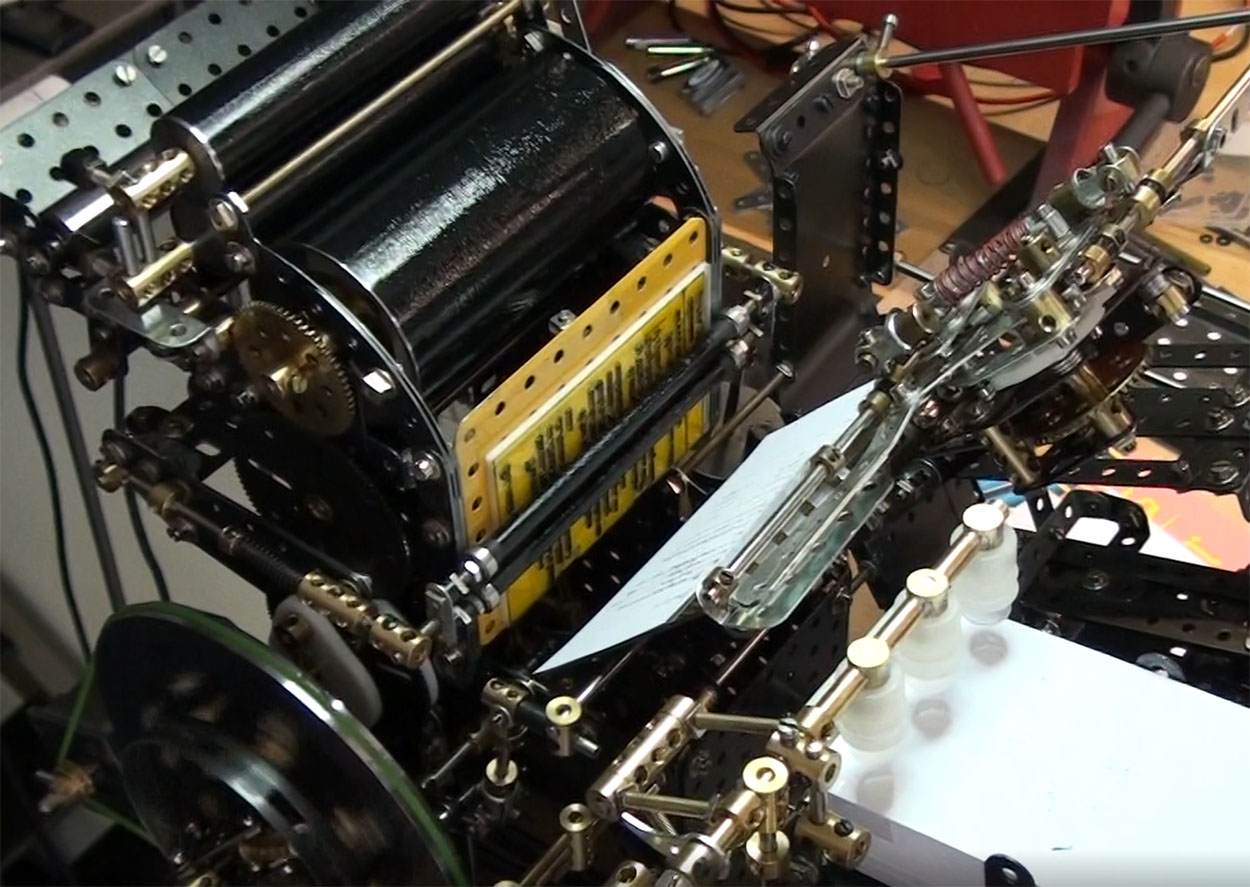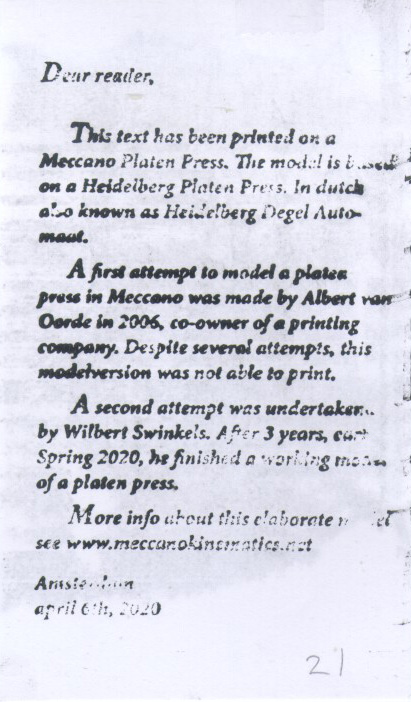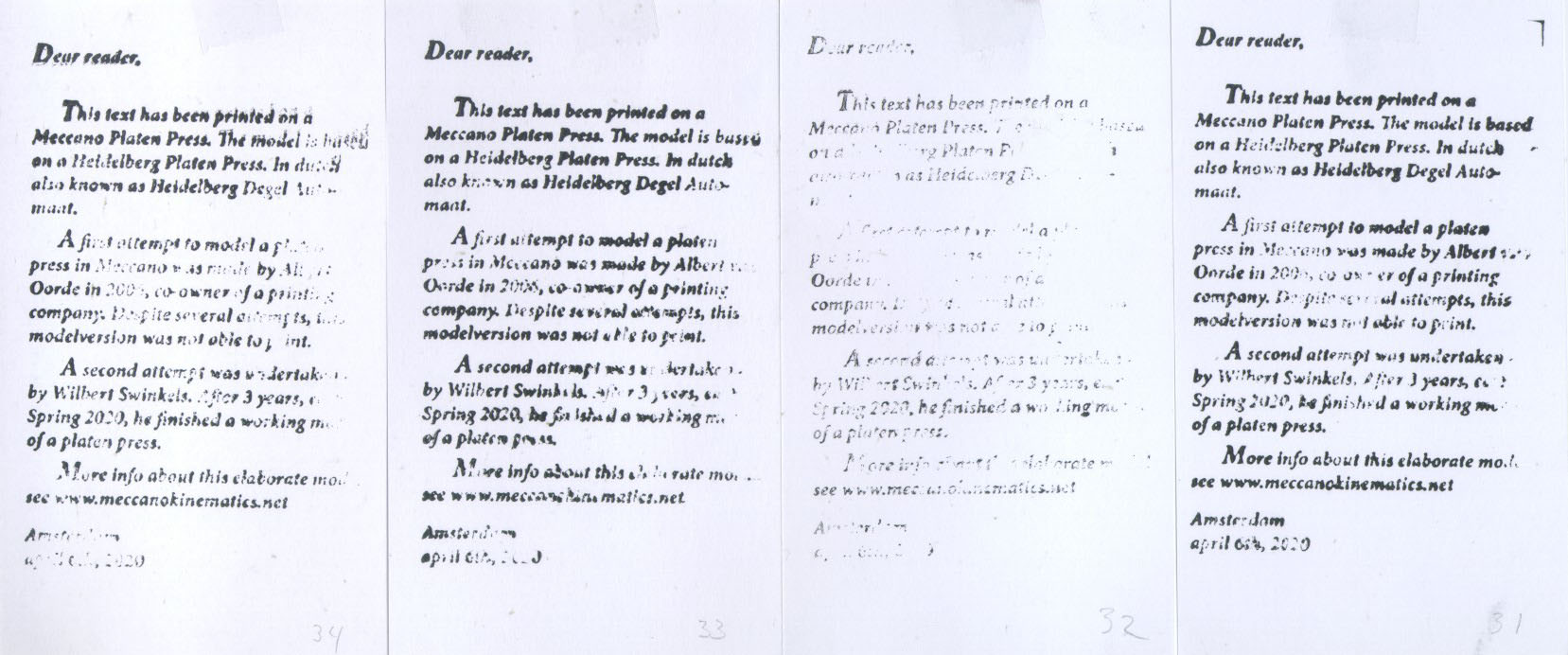Meccano Heidelberg Platen Press
Introduction
At a clubmeeting in Leimuiden of the Meccano Guild Netherlands (MGN) in november 2005 the following model of a Meccano Heidelberg platen press was shown:
 Overall look of the machine (March 2017)
Overall look of the machine (March 2017)
This model has been constructed by Albert van Oorde, a member of the MGN. Together with his brother he owned a printing company.
Research learned, that Albert van Oorde has exhibited this model only once, as in february 2006, he passed away at age 83. Albert van Oorde was not a well known member of the MGN and because of this the model soon was lost out of sight to the Meccano community.
Our MGN member Meindert Buis was able to get into contact with the van Oorde family. After some brief contacts with the son of Albert it was possible to borrow the machine for a couple of weeks, during which time a VirtualMEC model could be developed.
This was the starting point of my involvement into this project.
Analysis of the van Oorde model
First of all, this is the most impressive printing machine I have seen when it comes to making a Meccano equivalent of a printing press. There are only a handfull Meccano printing presses known around the world, varying from Stan Knight’s intriging platen press to cilinder presses of various sizes and complexity. Most of these presses however are not capable of printing anything, They merely give a representation of the general movements of the machine and show the synchronity between the different moving components during operation.
The Heidelberg platen press or Heidelberg Degel Automaat - shortly HDA - as a Meccano model according to Albert van Oorde was a serious attempt in producing a working model of the platen press. It took him years to develop a Meccano model of the HDA. Initially, the colours of the Meccano parts were red and green, but after completion he demolished the model, sandblasted all colourparts and assembled it again.
The model has been filmed in operation somewhere at the beginning of the millenium. Attempts are being made to find this film.
More info will follow.
The VirtualMEC model
I developed 3 VirtualMEC versions of the HDA. The first version is an exact copy of the van Oorde model (version 1) and took about 2 weeks to generate. If I had to generate a VM model based on photos only it probably would have taken months if even possible to generate a model at all! It is just like the Tony Rednall cyclograph: the inner workings of some models simply cannot be captured on a photo. During the development of the first version the machine has been analysed to fully understand it’s workings. Based on this analysis a new version (version 2) of the VMEC model was created.
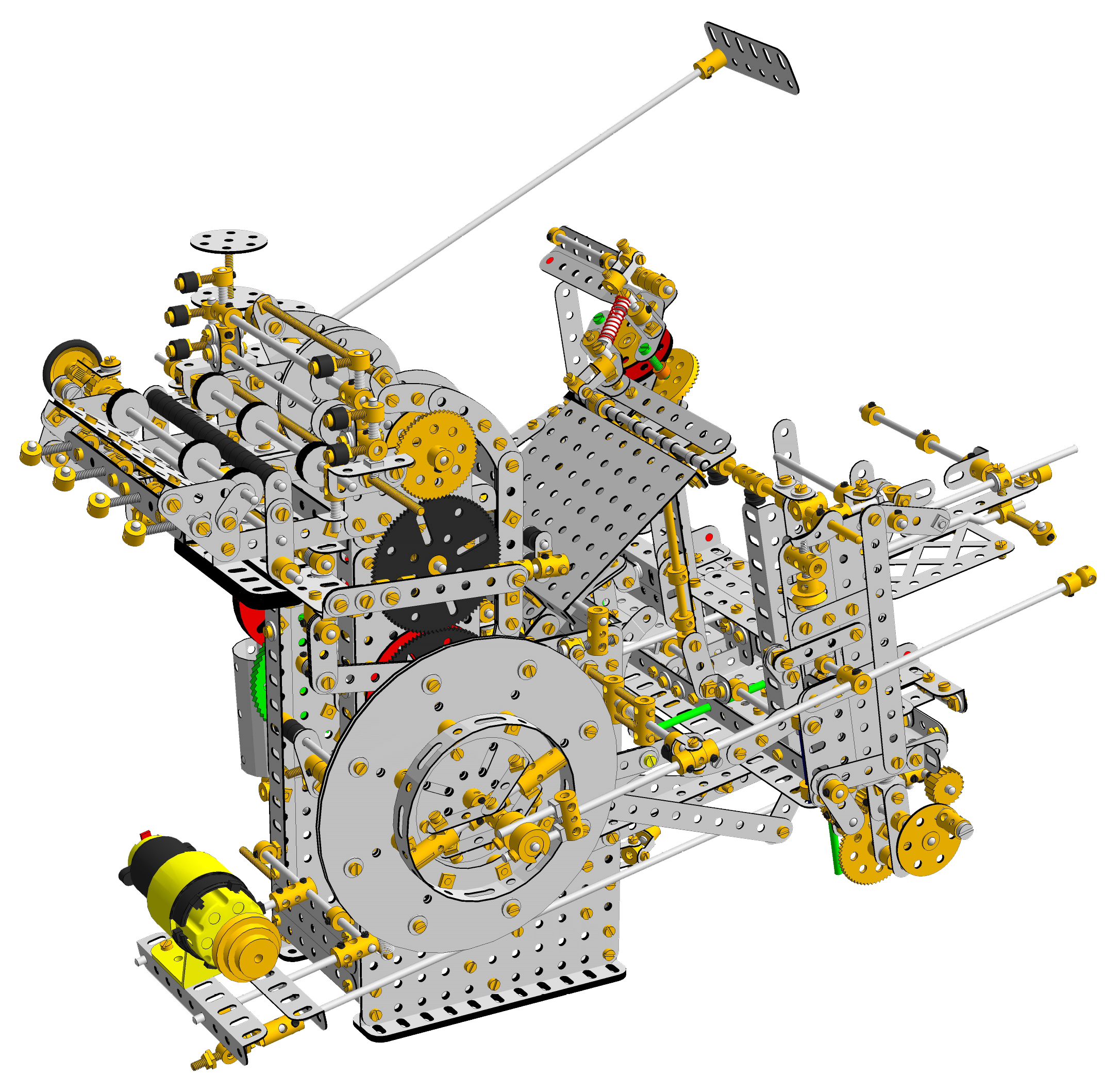 Overall look of version 2, february 2020.
Overall look of version 2, february 2020.
Between april 2019 and february 2020 I have been working on the Meccano model, based on version 2 of the VMEC model. During this period the VMEC model has been consequently modified conform the prototyping results of the real model. Early march 2020 the Meccano model was finished and ready for testing.
During testing it became clear, that a few modifcations had to be made. The impact of these modifications to the VMEC model were considerable, so I decided to create a revised VMEC model incorporating all the necessary modifications. This proces took about 3 weeks. Early april I finished the final VMEC version (3).
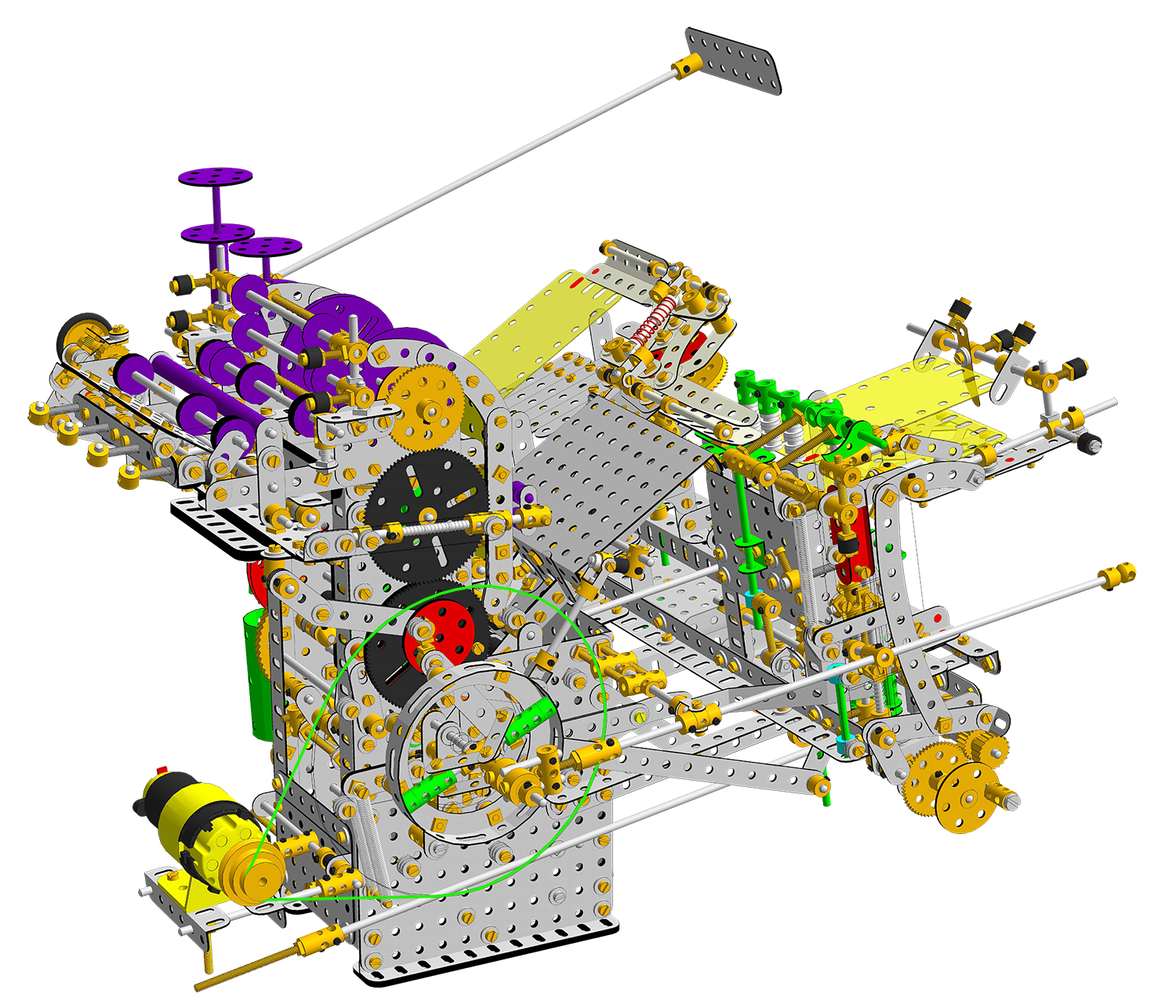 Overall look of version 3, april 2020.
Overall look of version 3, april 2020.
Update april 7th 2020
After 3 years of prototyping I am finalizing this project. The papertransport works well, but separation of the sheets is still challenging. Further, due to the dimensions of the papersheets, it is necessary to make a small modification of the frame. See some pictures below of the press in it’s current state. I will soon try to print something with real ink.
